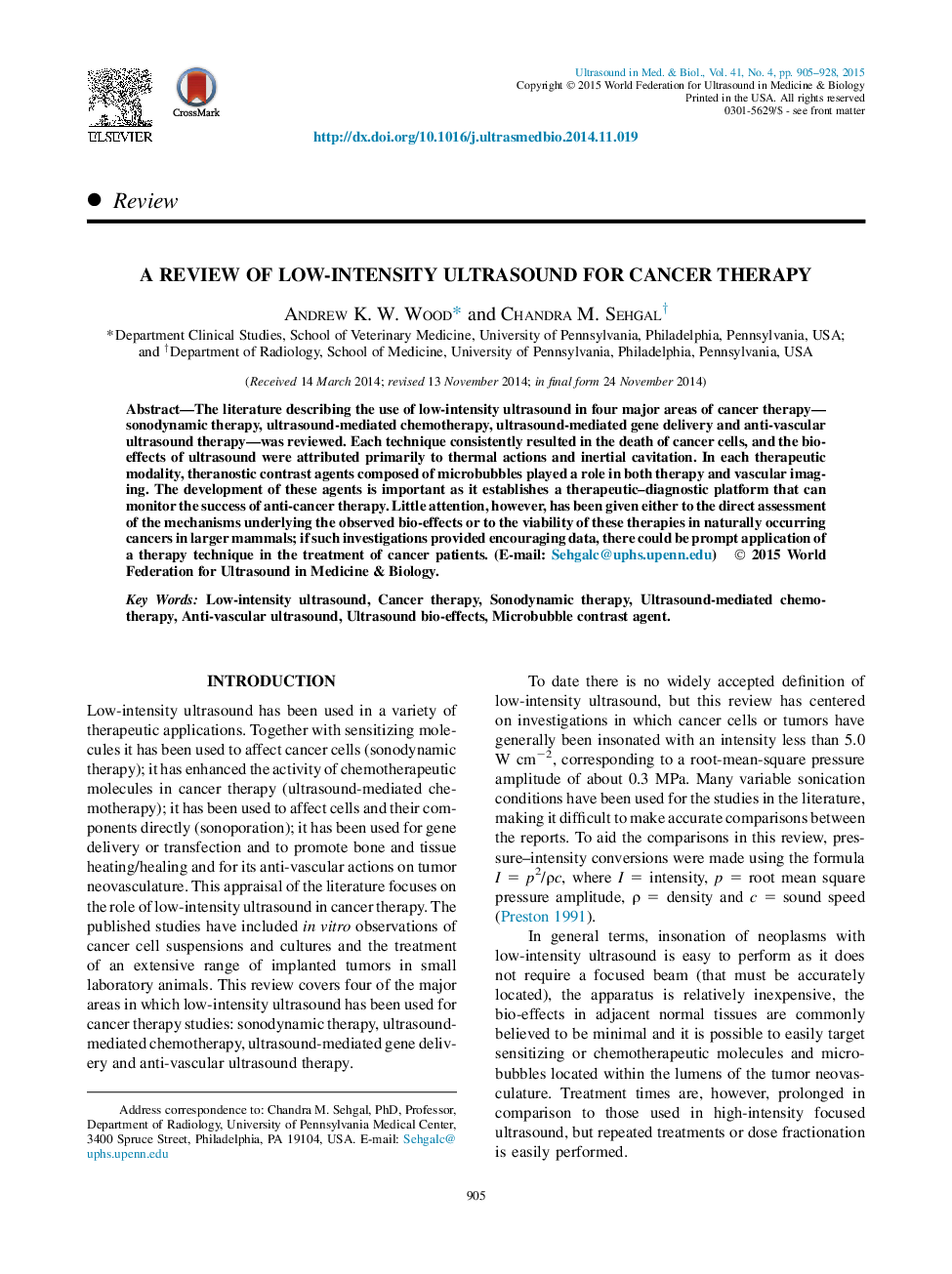| Article ID | Journal | Published Year | Pages | File Type |
|---|---|---|---|---|
| 10691357 | Ultrasound in Medicine & Biology | 2015 | 24 Pages |
Abstract
The literature describing the use of low-intensity ultrasound in four major areas of cancer therapy-sonodynamic therapy, ultrasound-mediated chemotherapy, ultrasound-mediated gene delivery and anti-vascular ultrasound therapy-was reviewed. Each technique consistently resulted in the death of cancer cells, and the bio-effects of ultrasound were attributed primarily to thermal actions and inertial cavitation. In each therapeutic modality, theranostic contrast agents composed of microbubbles played a role in both therapy and vascular imaging. The development of these agents is important as it establishes a therapeutic-diagnostic platform that can monitor the success of anti-cancer therapy. Little attention, however, has been given either to the direct assessment of the mechanisms underlying the observed bio-effects or to the viability of these therapies in naturally occurring cancers in larger mammals; if such investigations provided encouraging data, there could be prompt application of a therapy technique in the treatment of cancer patients.
Related Topics
Physical Sciences and Engineering
Physics and Astronomy
Acoustics and Ultrasonics
Authors
Andrew K.W. Wood, Chandra M. Sehgal,
